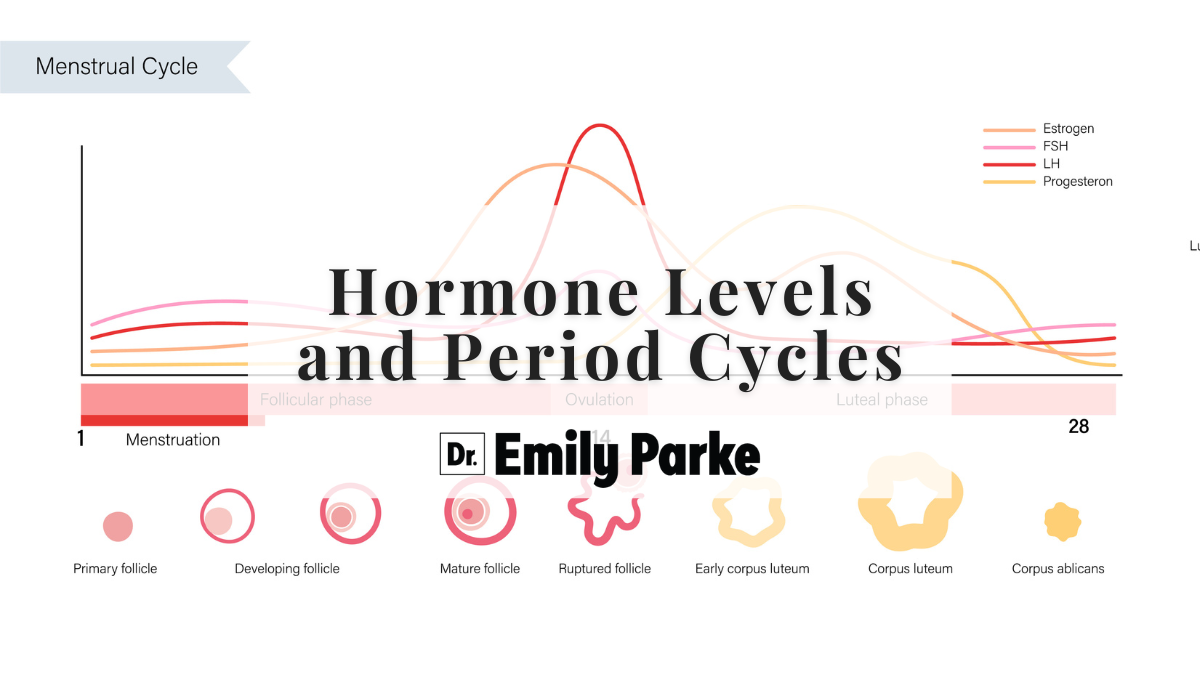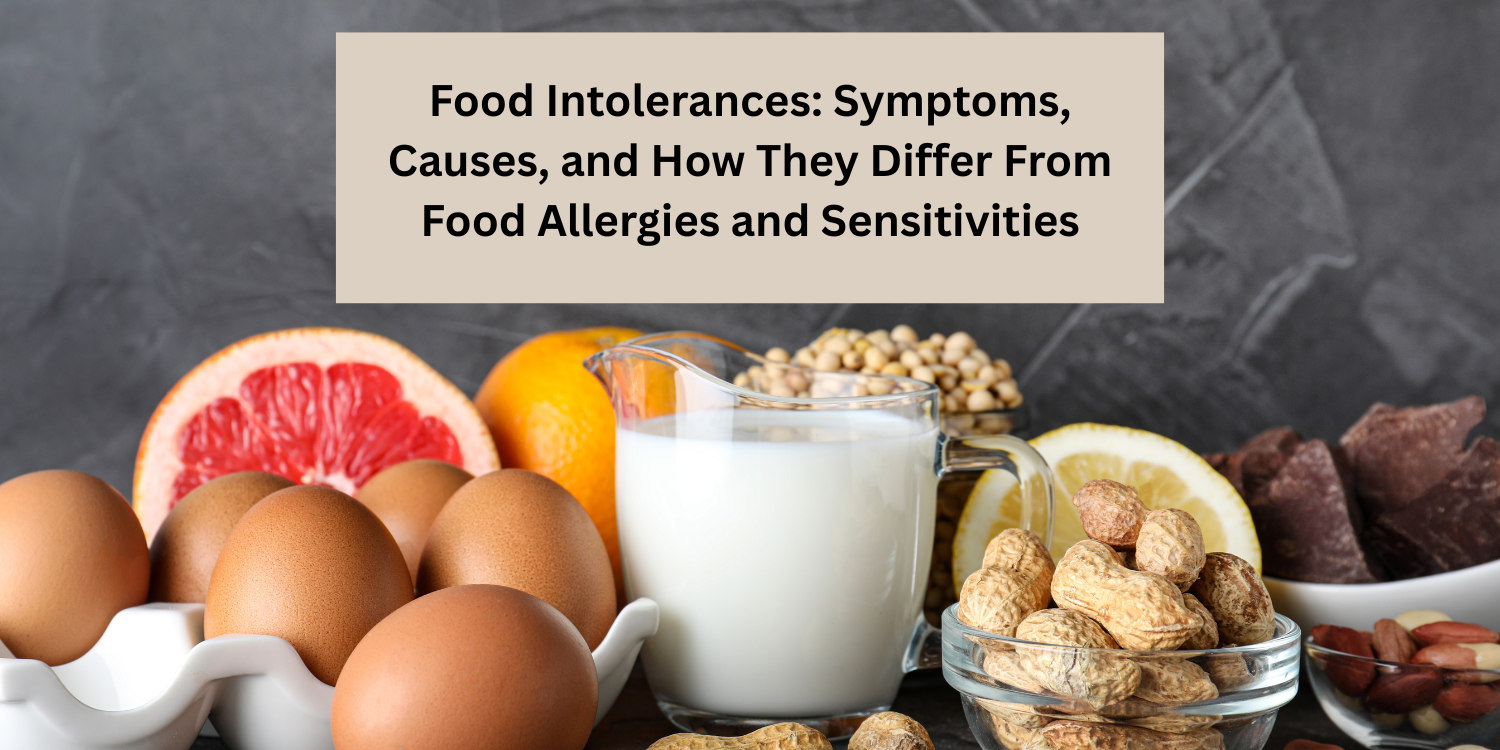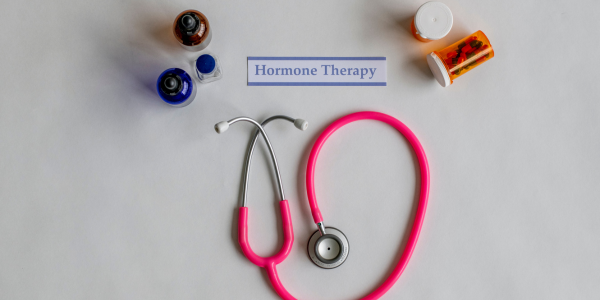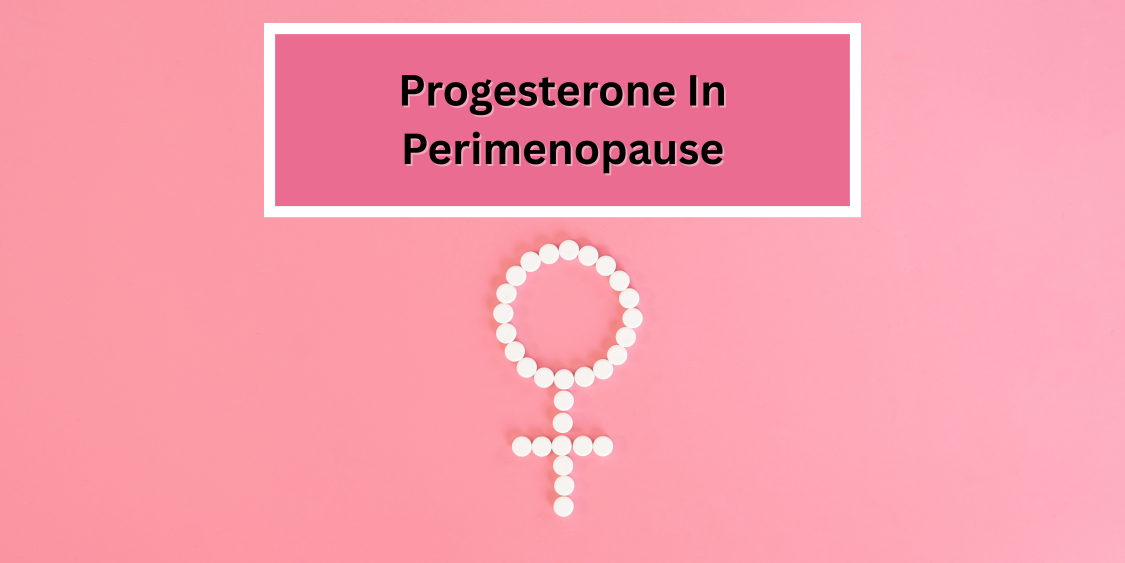

Hi, this is Dr. Emily Parke with your next Functional Health Minute. I’d like to take a few minutes to talk about a normal period cycle. How long is it? What does it look like? What happens during all the different phases?
When Does Your Period Start
So the first day of your period or cycle day one, as it’s medically called, is the first day that you bleed. So the first day that your bleeding starts is the first day of your period. Now, how long the bleeding part lasts can average anywhere from three to seven days. Again, for most women, it’s kind of more around five or so days-ish, but it’s okay if it’s a little shorter and okay if it’s a little bit longer. During this phase, your estrogen and progesterone are low. This is the follicular phase of your period cycle.
As it continues on, especially after you stop bleeding, what’s going to happen next is you’re going to get ready to ovulate. So about a couple of days or so before you ovulate, your estrogen levels are going to start to rise. Once they rise high enough, that’s going to trigger ovulation and the second half of the period cycle is then called the Luteal phase. So the Corpus luteum, which is where the follicle that you just ovulated is going to take over and progesterone is going to start to rise. As progesterone starts to rise, you’re going to get estrogen to start to fall. If you don’t get pregnant, progesterone and estrogen are going to fall and they’re going to be low. And then of course, your period will come and the whole cycle starts all over again.
When To Check Hormones
So there’s a couple of key timeframes where we might want to check hormones, especially if someone’s thinking about getting pregnant or even if they’re not thinking about getting pregnant. If they’re perimenopausal and they just want to see what’s going on with hormones, cycle day three is an important one for fertility, especially looking at the FSH, the follicle stimulating hormone number, and then about day 21-ish or so, so mid luteal phase is another important number where we can check to see how well your progesterone is doing.
Now, if you don’t have regular period cycles, obviously we just have to pick a day and check blood work and see what’s going on, but there are other advanced tests that we have. There is a 30 day cycle mapping test that we can do that really helps us figure that part out if you’re not sure. Also, for women that have had a hysterectomy or even a uterine ablation, but they still have their ovaries in, which means you’re still actually getting the hormone changes. Obviously, you’re not going to be bleeding in that scenario, but it can tell us how close you are or far away you are from menopause, what the hormones are doing at that time at least.
So if you are wondering where you might be, the first thing you do is get some blood work. Again, your doctor may actually want to time you day three of your cycle or day 21 of your cycle. By the way, I’m talking about a “normal” about 28 day period cycle. A normal period cycle can really range anywhere from 24 to 30-ish days, and then there are things that, of course, will shorten your cycle or could shorten your cycle or lengthen it and a lot of the times it has to do with whether you’re ovulating or not.
Other Hormones To Check
So the numbers we’re looking at are FSH, LH, estrogen, which usually we measure as estradiol, progesterone, and we also are going to want to look at total and free testosterone. Those do not change during a period cycle, but it can be really helpful for us to evaluate, especially if there’s something going on, like PCOS, polycystic ovarian syndrome, for example, that can be happening when we’ll see high testosterone levels and high insulin levels and blood sugar and metabolic syndrome and so on and so forth. But those are the basic hormones we’re going to want to look at, FSH, LH, estradiol, progesterone, total and free testosterone.
And then if we’re also evaluating adrenal hormones, which we usually do, especially the first time in checking, we’re going to want to look at DHDAS and your morning cortisol. And then of course, we always want to look at thyroid hormones because they’re so impactful on the period cycle. And that is of course looking at, at least a TSH, total T3, total T4, free T3, free T4, reverse T3, and sometimes we’ll look at thyroid antibodies depending on the scenario, but for period cycles, again, normal on average about 28 days. Cycle day one’s the first day you have your period. We typically will check labs on cycle day three and/or about cycle day 21. This is Dr. Emily Parke with your Functional Health Minute.
Share:
Dr. Emily Parke
Social Media
Most Popular Posts



Testosterone Replacement In Menopause

Progesterone Therapy In Perimenopause
Subscribe To Our Newsletter
Related Posts

Did you know there’s a difference between food allergies, sensitivities, and intolerances?
Did you know that there’s a difference between food allergies, food sensitivities and food intolerances? Food allergies, the reactions tend to happen pretty immediately and

Food Intolerances: Symptoms, Causes, and How They Differ From Food Allergies and Sensitivities
Eating a wide variety of whole foods is a key way to ensure a nutrient-rich diet full of vitamins and minerals. But what happens when

Testosterone Replacement In Menopause
What about adding testosterone replacement for women on hormone replacement therapy? Well, it can be really, really helpful for energy, libido, body composition changes. When

Progesterone Therapy In Perimenopause
What about progesterone therapy in menopause? So if you are on hormone replacement therapy with estrogen and you have a uterus, meaning you have not
